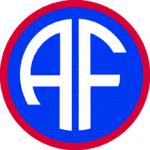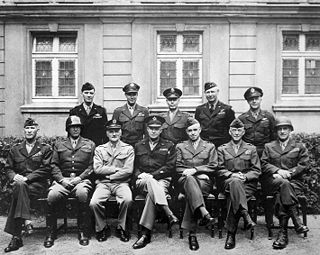
The European Theater of Operations, United States Army (ETOUSA) was a theater of Operations responsible for directing United States Army operations throughout the European theatre of World War II, from 1942 to 1945. It commanded Army Ground Forces (AGF), United States Army Air Forces (USAAF), and Army Service Forces (ASF) operations north of Italy and the Mediterranean coast. It was bordered to the south by the North African Theater of Operations, United States Army (NATOUSA), which later became the Mediterranean Theater of Operations, United States Army (MTOUSA).
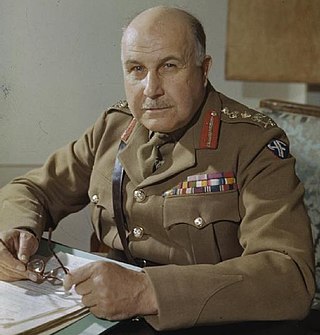
Field Marshal Henry Maitland Wilson, 1st Baron Wilson,, also known as Jumbo Wilson, was a senior British Army officer of the 20th century. He saw active service in the Second Boer War and then during the First World War on the Somme and at Passchendaele. During the Second World War he served as General Officer Commanding-in-Chief (GOC-in-C) British Troops in Egypt, in which role he launched Operation Compass, attacking Italian forces with considerable success, in December 1940. He went on to be Military Governor of Cyrenaica in February 1941, commanding a Commonwealth expeditionary force to Greece in April 1941 and General Officer Commanding (GOC) British Forces in Palestine and Trans-Jordan in May 1941.
Supreme Allied Commander is the title held by the most senior commander within certain multinational military alliances. It originated as a term used by the Allies during World War I, and is currently used only within NATO for Supreme Allied Commander Europe and Supreme Allied Commander Transformation.
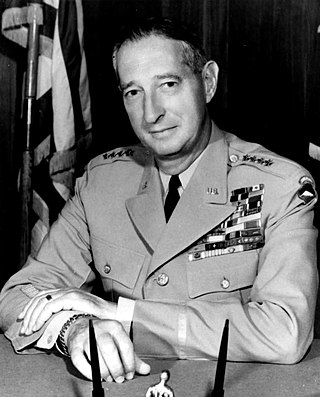
Mark Wayne Clark was a United States Army officer who saw service during World War I, World War II, and the Korean War. He was the youngest four-star general in the US Army during World War II.

Supreme Headquarters Allied Expeditionary Force was the headquarters of the Commander of Allied forces in northwest Europe, from late 1943 until the end of World War II. US General Dwight D. Eisenhower was the commander in SHAEF throughout its existence. The position itself shares a common lineage with Supreme Allied Commander Europe and Atlantic, but they are different titles.

The Allied Armies in Italy (AAI) was the title of the highest Allied field headquarters in Italy, during the middle part of the Italian campaign of World War II. In the early and later stages of the campaign the headquarters was known as the 15th Army Group; it reported to the Joint Allied command Allied Forces Headquarters (AFHQ), the theatre command for the Mediterranean theatre.

The Twelfth Air Force (12 AF; Air Forces Southern, (AFSOUTH)) is a Numbered Air Force of the United States Air Force Air Combat Command (ACC). It is headquartered at Davis–Monthan Air Force Base, Arizona.

The 6th United States Army Group was an Allied army group that fought in the European Theater of Operations during World War II. Made up of field armies from both the United States Army and the French Army, it fought in France, Germany, Austria, and, briefly, Italy. It was established in July 1944 and commanded throughout its duration by General Jacob L. Devers.

General Walter Bedell "Beetle" Smith was a senior officer of the United States Army who served as General Dwight D. Eisenhower's chief of staff at Allied Forces Headquarters (AFHQ) during the Tunisia Campaign and the Allied invasion of Italy in 1943, during World War II. He was Eisenhower's chief of staff at the Supreme Headquarters Allied Expeditionary Force (SHAEF) in the campaign in Western Europe from 1944 to 1945.
The Mediterranean Theater of Operations, United States Army (MTOUSA), originally called the North African Theater of Operations, United States Army (NATOUSA), was a military formation of the United States Army that supervised all U.S. Army forces which fought in North Africa and Italy during World War II.
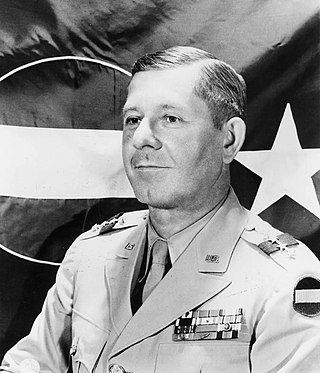
Jacob Loucks Devers was a general in the United States Army who commanded the 6th Army Group in the European Theater of World War II. He was involved in the development and adoption of numerous weapons, including the M4 Sherman and M26 Pershing tanks, the DUKW amphibious truck, the Bell H-13 Sioux helicopter, and the M16 rifle.

Middle East Command, later Middle East Land Forces, was a British Army Command established prior to the Second World War in Egypt. Its primary role was to command British land forces and co-ordinate with the relevant naval and air commands to defend British interests in the Middle East and eastern Mediterranean region.

The Allied leaders of World War II listed below comprise the important political and military figures who fought for or supported the Allies during World War II. Engaged in total war, they had to adapt to new types of modern warfare, on the military, psychological and economic fronts.

Northwest African Air Forces (NAAF) was a component of the Allied Mediterranean Air Command (MAC) during February–December 1943. It was responsible primarily for air operations during the Tunisian Campaign and bombing of Italy. Its commander was Lieutenant General Carl Spaatz of the United States Army Air Force. NAAF was created following a reorganization of the command structure of Allied air forces in the Mediterranean Theatre. The other components of MAC were Middle East Command (MEC), AHQ Malta, RAF Gibraltar and 216 Group.
The Mediterranean Air Command (MAC) was a World War II Allied air force command that was active in the North African and Mediterranean Theater of Operations (MTO) between February 18 and December 10, 1943. MAC was under the command of Air Chief Marshal Sir Arthur Tedder, whose headquarters were next to those of the Supreme Allied Commander, General Dwight D. Eisenhower, in Algiers, Algeria, during the planning of the Allied campaigns in Tunisia, Pantelleria, Sicily, and the invasion of mainland Italy during the war.

No. 201 Group was a group of the Royal Air Force during the Second World War.

General Sir John Francis Martin Whiteley, was a senior British Army officer who became Deputy Chief of the Imperial General Staff (DCIGS). A career soldier, Whiteley was commissioned into the Royal Engineers from the Royal Military Academy, Woolwich in 1915 during the First World War. During the war he served in Salonika and the Middle East.
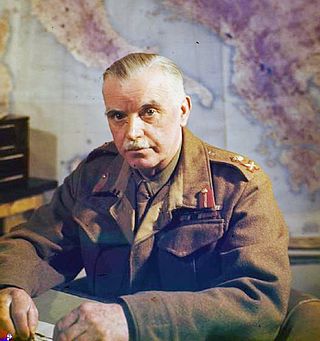
General Sir William Duthie Morgan, was a British Army officer. During the Second World War, he served as Chief of Staff to Field Marshal Harold Alexander, and later succeeded him as Supreme Allied Commander in the Mediterranean Theatre of Operations.

Major-General Sir Kenneth William Dobson Strong was a senior officer of the British Army who served in the Second World War, rising to become Director General of Intelligence. A graduate of the Royal Military College, Sandhurst, Strong was commissioned into the 1st Battalion, Royal Scots Fusiliers in 1920. After service as an Intelligence Officer with his battalion in Ireland from 1920 to 1922 during the Irish War of Independence, he volunteered for service as an interpreter and was posted to Germany with the British Army of the Rhine. In 1935 he returned to Germany as a member of the International Force supervising the Saarland plebiscite. Afterwards, he joined the German Intelligence Section at the War Office. In 1937 he became Assistant Military attaché in Berlin.

Lieutenant General Sir Humfrey Myddelton Gale, was an officer in the British Army who served in the First and Second World War, during which he was Chief Administrative Officer at Allied Forces Headquarters and later SHAEF under General Dwight D. Eisenhower. After the Second World War he was European Director of the United Nations Relief and Rehabilitation Administration, worked for the Anglo-Iranian Oil Company, and was chairman of the Basildon, Essex New Town Development Corporation
